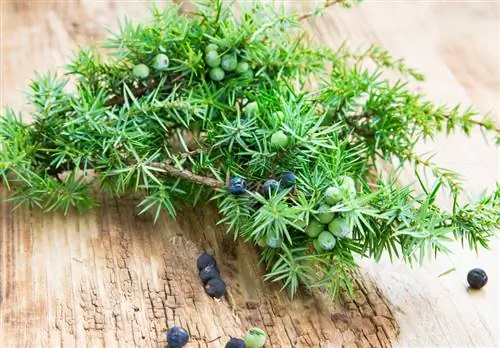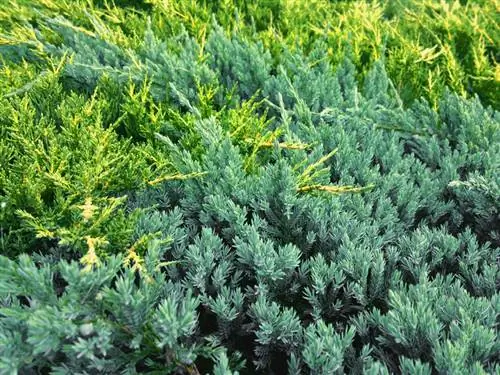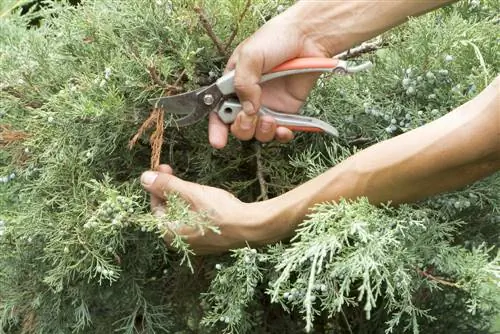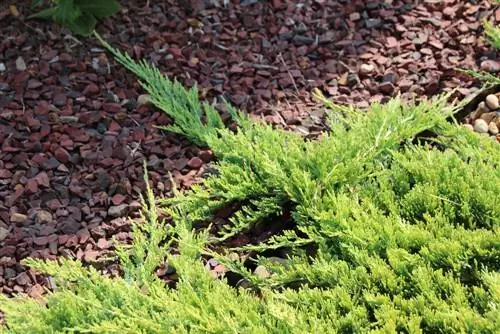- Author admin [email protected].
- Public 2023-12-16 16:46.
- Last modified 2025-06-01 06:02.
Whether as a ground cover for slopes and waysides, for planters as a year-round decoration or as a trimmed bonsai - caring for the creeping juniper is uncomplicated. But does this apply to all areas, including cutting?
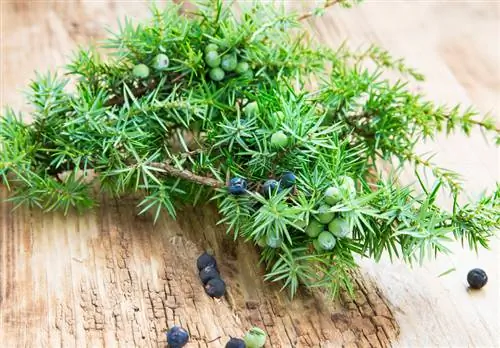
When and how should you cut a creeping juniper?
The creeping juniper is ideally cut in spring or autumn, when the weather is frost-free. Green branches can be cut, cutting at the forks of the branches. Avoid cutting into old wood and wear gloves to avoid injury from sharp needles.
Reasons for cutting
There are several reasons why cutting the creeping juniper can make sense:
- promotes new growth
- denser, more compact growth
- Removal of diseased parts
- for shaping (e.g. bonsai design)
- for obtaining cuttings for propagation
Time: Whenever there is no frost
You can cut the creeping juniper whenever you want, provided there is no frost. However, it is recommended to cut it in spring before new shoots emerge or in autumn between August and October. There should be no blazing sun or rain while cutting.
How to properly cut a creeping juniper
When cutting, consider these aspects:
- green branches can be cut
- cutting at the branch forks
- don't cut into old wood
- It is better to remove old shoots completely
- Cut shoot tips for denser growth
- thinning every 2 years
- remove dead wood from inside the plant before cutting (better view)
- cut away parts affected by diseases such as pear rust (do not throw them in the compost!)
Topiary cutting is tolerated unconditionally
The creeping juniper easily tolerates regular topiary pruning, for example for the purpose of growing a bonsai. It is considered highly recommended and popular for bonsai design. Its growth rate is extremely slow at 3 to 7 cm per year. This means he won't get out of shape so quickly.
Wear protection - prick the needles
You should not cut a creeping juniper carelessly. The numerous needles, which are located close together, sting and can cause unpleasant skin injuries. Sensitive people can even experience allergic reactions due to the toxins they contain. Therefore, it is better to wear gloves and long clothing when cutting!
Tip
The berry-studded branches can be cut and used as decoration in a vase or as part of an arrangement. The berries are edible and are suitable for seasoning wild dishes, for example for making tea.

